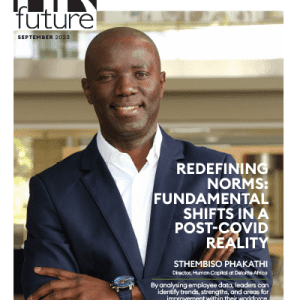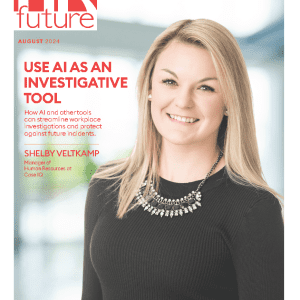In 2019, a study indicated that the workforce in the United States consists of five generations: The Silent Generation, Boomers, Generation X, Millennials, and Generation Z. Millennials had the highest share, while the Silent Generation had the lowest.
Since this data is relatively old, it’s worth noting that the numbers could’ve changed or stayed in the last years. However, one thing is sure: today’s businesses manage multi-generational employees. The workforce is becoming even more diverse due to remote and hybrid work.
While a multi-generational team provides more opportunities, it also carries significant challenges. You must understand these barriers to address them accordingly. But what are these barriers, and how should you manage them? Read on to find out.
The Current Generations of the Workforce
Understanding multi-generational challenges involves understanding the characteristics of each generation.
The Silent Generation and Baby Boomers
The Silent Generation, commonly known as Traditionalists, were born between the late 1920s (1928) and mid-1940s (1945). They are currently in their seventies to nineties.
Most Traditionalists have retired, but some continue to work as board members, partners, or advisors. They value hard work and tradition but struggle to adapt to new technologies due to their old age.
Meanwhile, Baby Boomers were born between the end of the Second World War (1946) and 1964. They are currently in their late fifties and seventies. Most are still part of the workforce, while some have retired. They are more goal-oriented and self-assured. Although most struggle to use new technologies, they can adapt when needed.
Generation X
Generation X, also called the “middle child,” was born from 1965 to 1980. Despite being the fewest in population, they still comprise a significant portion of the contemporary workforce.
Gen Xers were the first generation to live with personal computers. They are generally described as independent, resourceful, and adaptable. They’re also more tech-savvy than their predecessors but are less tech-dependent than Millennials and Gen Z.
Millennials
Generation Y, commonly known as Millennials, was the first to live with the Internet. They either grew up with the Internet or were born into it. Born from 1981 to 1996, they carry the values of the previous generations but are more tech-savvy and independent.
Millennials are described as the most adaptable generation due to being born before and after the advent of the Internet. Having lived through many changes, they’re more likely to pursue new things to advance their careers.
Generation Z
Gen Z is currently the youngest generation in the workforce. Born between 1997 and 2015, the oldest Gen Zers have already begun their careers.
Also called “digital natives,” Gen Zers are the most tech-savvy generation. They were born and exposed to social media and digital technologies for nearly half their lives.
Gen Zers are also the most open-minded, diverse, and inclusive generation. They want to improve themselves and make socially actionable impacts on the world.
Tips for Managing Your Multi-Generational Team
The most common multi-generational challenges in the workplace are different priorities, stereotypes, and miscommunication.
For instance, younger generations may feel anxious asking questions to their older colleagues. They may also seek validation because some older generations dismiss their younger colleagues as inexperienced. Conversely, younger generations may mock older colleagues for lacking technological skills and digital literacy.
Here’s how to mitigate and prevent these multi-generational barriers in the workplace:
Combat ageism by embracing the diversity of the ages
Ageism, or age discrimination, refers to treating a colleague unfavorably because of their age. While this can happen to anyone, it’s more targeted to older adults.
To combat workplace ageism, incorporate age into your definition of workplace diversity. This way, your diversity and inclusion strategies focus on intersectionality rather than single topics like gender.
Intersectionality acknowledges the connection between social categorizations—like age, gender, race, and class— of discrimination. It recognizes that each employee experiences specific prejudice based on social stereotypes.
Foster respect and acceptance
The key to successful multi-generational collaborations is fostering respect, acceptance, and understanding that everyone is different.
Take the time to talk and learn about your teams’ unique experiences, motivations, and preferred work styles. Include everyone in the discussions so the older and younger employees have fruitful conversations that appreciate and respect their differences.
Facilitate training programs about multi-generational differences
Another way to manage generational differences is by facilitating diversity, inclusion, and equity (DEI) training programs. Conduct workshops on diversity barriers with expert guest speakers discussing the multi-generational workforce or ageism.
DEI training programs show that you know your employees’ challenges and are actively developing ways to address and mitigate the barriers. Not only does this make your employees feel heard, but it also shows how much you value creating a safe workplace.
You can also include multi-generational leadership programs for your team leaders. Give them resources from agencies like the Center for Creative Leadership or facilitate leadership training and workshops.
Encourage mutual mentorship
Team management requires effort from everyone. The staff learns from the team leaders and vice versa. Concurrently, you learn from them, too.
As such, encourage mutual mentorship by highlighting the importance of feedback. Combine employees with complementary skills in every project to leverage diverse perspectives and minimize generational gaps.
Promote open and honest communication
Every employee has a unique work style and approach. Since they launched their careers at different timelines, they shouldn’t expect their colleagues to understand these approaches immediately. Thinking this way may lead to miscommunication.
To prevent miscommunication:
- Promote open and honest communication;
- Let your direct reports ask and communicate what kind of interactions are favorable and most comfortable for them; and
- Show them you’re committed to meeting their preferences halfway so they can do the same to their colleagues.
Debunk harmful and dated stereotypes
Some people believe in stereotypes. Unfortunately, many of these beliefs are harmful and dated. Each generation possesses problematic generalizations that can affect workplace interactions.
Examples of generational stereotypes include:
- Boomers are resistant to change;
- Gen Xers are the slacker generation due to their apathy, cynicism, and disinterest in social and political advocacies;
- Millennials are entitled; and
- Gen Zers can’t do face-to-face communication and are lazy due to a lack of solid work ethic.
Debunking these stereotypes involves educating yourself and your employees about the different realities and experiences generations have to go through in their time. As the management head, be the first one to debunk these generalizations.
Ensure your employees understand they can only know their colleagues’ personalities through interactions, not hasty beliefs. This way, they won’t make harmful, age-based assumptions that can lead to significant issues.
Encourage everyone to set and respect boundaries
The multi-generational workforce has introduced contemporary values and beliefs into the workplace. Topics that were considered taboo are now widely tackled in professional settings.
Since younger generations are more progressive and open about social issues, they’re more comfortable talking about diversity, inclusion, race, gender, and other topics that are considered taboo. This willingness contributes to eradicating stigma and prejudice in the workplace.
However, it’s also essential to remember how older employees perceive these topics. Disagreements are inevitable, but you must help them understand why your company values discussing these issues.
To respect every employee’s boundaries, prioritize their psychological safety. This workplace environment enables everyone to take risks and share ideas at their most comfortable pace, not force them to accept perspectives. Learning takes time, so allow them to prepare for sensitive discussions to prevent arguments.
Avoid favoritism
Some executives and team leaders may favor older employees because of their experience. This favoritism can result in thinking younger generations are boastful when they share ideas or speak up. You don’t want to be this kind of executive.
To avoid favoritism, ensure that everyone is heard and considered in meetings. Give your younger employees the space to be outspoken and respectfully show their skills. Moreover, allow them to ask questions and give feedback.
Concurrently, remind your older employees that even if the younger staff has less experience, this doesn’t mean they should dismiss their insights. Do the same to your younger staff as well.
Make Your Multi-Generational Employees Feel Heard and Included
Managing a multi-generational team doesn’t have one-size-fits-all approaches. You must consider your organizational structure, management, and goals to develop the most efficient strategies.
However, your approach should be simple enough. After all, employees prefer management that listens and addresses their concerns. Bridge the generational gaps through attentive listening to understand your team’s differences. The more you listen, the more you make them feel heard and included.
Image by Alex Kotliarskyi on Unsplash
HR Future Staff Writer


























